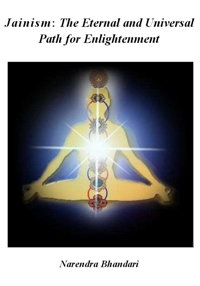01.2 Nature's Path Based On Fossil Record (1)
If we look at the history of evolution of species on Earth we find that over time the very primitive species have evolved into the most developed species. Life first started on the Earth about 3500 million years ago. Since then, the nature has been following a direction, a direction of evolution of consciousness. This record is preserved in form of fossils on Earth from the very beginning as shown in Figure 1.1. Let us look at this record in some detail.
Fig 1.1
The evolutionary record of species on Earth, beginning with single celled species to multi celled species, to marine species, mobile animals, plants, mammals and flying species to humans. Predecessors of Humans (Hominids) first appeared on the Earth about 6 million years ago, rapidly evolving in to Man (Homosapien) who first appeared about 200000 years ago.
Evidence of whatever happens on Earth, in form of any activity involving either living and non-living, eventually gets washed off by rain and rivers in to the sea and deposits there together with the dust at the bottom. The history of life is preserved as fossils in these sediments. It is clear from these records that life on earth began about 3500 million years ago, about 1000 million years after the Earth was formed, with relatively simple single-celled micro-organisms, the first prokaryotes. They evolved into multi-celled (eukaryotic) organisms and then slowly into mobile (moving) and flying species. Mammals and humans arrived on the Earth very recently. Hominids, the predecessors of Homo Sapiens emerged only about 6 million years ago. This sequence or the tree of life is shown in figure 1.1. If we ignore small perturbations which have punctuated the evolution occasionally, we find that broadly the nature itself has followed a direction, a path of evolution of consciousness to higher and higher level. Thus we may conclude that the natural or "true" path is the one which evolves consciousness to a higher level. We can then say that every action which enhances the consciousness to a higher level is "dharma" and any step which goes in the reverse direction, i.e. reduces the level of consciousness is "adharma".
Jainism classifies species in one sensed (touch) to five sensed (touch, smell, taste, hearing and vision) species. Nature seems to have started with one sensed organisms and slowly evolved in to five sensed organisms. Extrapolating this trend into the future, it can be predicted that the level of consciousness will develop further with time and a super human will no doubt arise. Jainism prescribes a methodology to attain higher level of consciousness, evolution to the next stage, if nature continues to tread this evolutionary path. This stage will be accompanied by higher level of jnān.
Study of the fossil record in sediments has taught us many other aspects of evolution. The main features are summarized below.
The fossil record also tells us that although physical evolution occurs gradually, consciousness occasionally makes a big jump. In the history of life on earth, four revolutions have occurred. The first was the origin of life, about which we know little. The most primitive, for example monocellular species like algae (prokaryotes), remained completely dependent on environment for their survival and natural transmutation for evolution. Then came higher level of species which proactively interacted with the environment and modified themselves by interaction. The second big revolution came when species acquired mobility with the onset of Phanerozoic era. This occurred about 550 million years ago. The third revolution is the appearance of mammals. The last revolution is the appearance of humans who can consciously evolve by will and can even change the environment. This started only about 6 million years ago with appearance of hominin genus, ardipithecus and man, as we know today, i.e. homo sapiens appeared only about 200,000 years ago. Thus we see that the development of consciousness over the geologic times is going on at an ever accelerating pace. The next revolution does not seem to be far away and we are already at its doorsteps.
The most primitive species (e.g. algae) had only mati jnān and later the higher species (mammals e.g.) developed sruta jnān. The humans have discovered laws and developed ways of calculations by which they can acquire a kind of avadhi jnān transcending space and time. They can reasonably well estimate what happened in the remote past anywhere in the universe and can well predict the future. The evolution of consciousness thus has been accompanied by evolution of jnān to a higher state, i.e. from mati to shruta to avadhi as can be seen from the species existing at various times in this evolutionary chain. Extrapolating this in to the future would imply that further evolution will lead to higher levels of consciousness and jnān, with time i.e. to manahparyāy and ultimately to Keval jnān. There is nothing which remains to be known after one acquires Keval jnān. And eventually, everyone should become a kevali, if nature has its way. Although this is only an extrapolation, considering the logic on which science works, this looks inevitable.
Based on the observation of physical characteristics and their inter relation in several species, Darwin found that they have physically evolved in different ways over time as a consequence of interaction with the environment and concluded that evolution takes place by natural selection and life is a struggle for existence and survival of the fittest. One point is clear from the Darwin's theory that evolution is a product of two processes, which are operating all the time: interaction and adaptation. Both are the traits of soul i.e. consciousness. Adaptation essentially means learning and there is no devolution, i.e. unlearning. Evolution, however, is not confined to physical evolution only; the underlying trend is evolution of consciousness:. Whether mechanical interaction with the environment leads to physical evolution of the brain or consciousness is the motive force which by interaction with matter leads to learning process which in turn raises the consciousness level remains to be determined by further research at molecular level. Be it as it may, the journey of life on earth has been from a very low level of consciousness in single celled species to the highest level seen currently in humans. Evolution, like karma (Chapter 4) has two components: Sanchit, the cumulative evolution from the single celled algae to the present human life and arjit that is the extent to which we evolve in the present life. Thus we owe our present state of consciousness, indeed our very existence, not only to "our" past lives or to our parents but to the lives of all the species which have existed till now, alive and dead; extant and extinct. This is the fundamental concept leading immediately to the importance of nonviolence. As far as we can extrapolate, the evolutionary trend of consciousness should continue in the future. This then is the path of nature and it has set itself a goal of raising the level of consciousness to ever increasing level.
The question then arises "Can we humans, by some technique, attain the next state, which, in comparison to us, may be considered an enlightened state". It may just only be a step away. According to Jainism, the answer is "Yes, we can". That is Jainism all about. At any point of time, the population has a wide spectrum of consciousness levels. A small fraction is highly advanced, at the highest end of consciousness level, most are at the average level and a few are at the lower tail end. The distribution should be similar to the Maxwellian distribution of energy. Those at the highest level are close to the next stage where nature is going to take us in course of time by Darwinian evolution, i.e. they are almost there. They, by practicing the techniques propounded by Jainism (as discussed in chapter 6), and surely by other paths as well, can attain the next level of consciousness.
One important point may be noted here regarding the origin and evolution of life. All species are symmetrical and have binary system (two eyes, two arms, two legs etc.). All the life on earth therefore probably has the same root. There are three basic type of species on the earth: Archea, Bacteria and Eucarya and it has been speculated that all plant and animal kingdom has originated from them (Fig. 1.2). In essence all of them have a common root, the Last Universal Common Ancestor, termed LUCA. If this is true, all of them may have the same root as can be seen in the phylogenetic tree of life (Fig. 1.2).
Fig. 1.2
The Phylogenetic Tree indicating common root, [Last Universal Common Ancestor, LUCA] for all plant and animal kingdoms on the earth.
There is another fundamental point to be noted in context of Jainism: Jainism postulates that jiva and pudgala are separate entities, uncreated (without beginning and end), everlasting, coexisting and interacting, influencing each other yet unrelated.
While Jiva or ātmā is sentient (conscious), incorporeal, immaterial, formless, weightless, colourless, odourless, eternal, matter is corporeal, non-sentient, non-psychical, inert entity. One cannot be produced from the other. Modern scientific thought speculates, but has not been able to prove, that life has originated from matter.
 Prof. Dr. Narendra Bhandari
Prof. Dr. Narendra Bhandari


